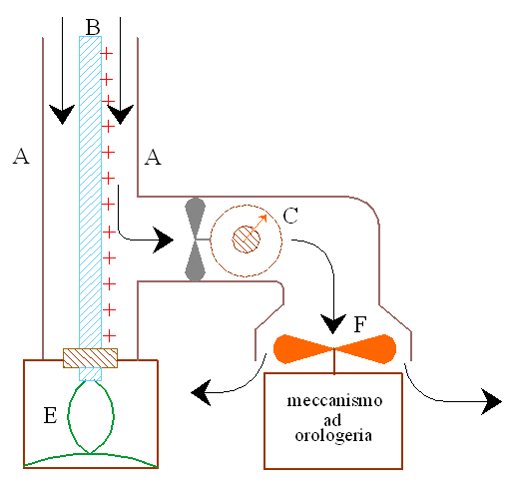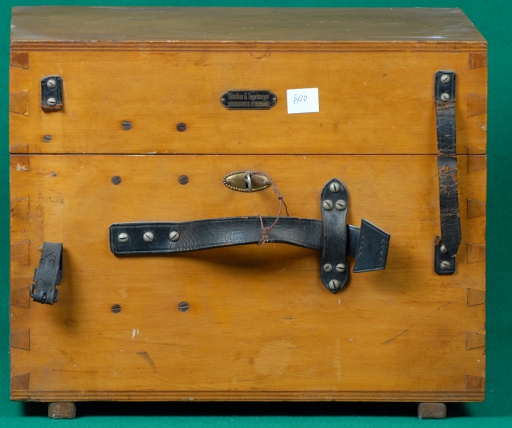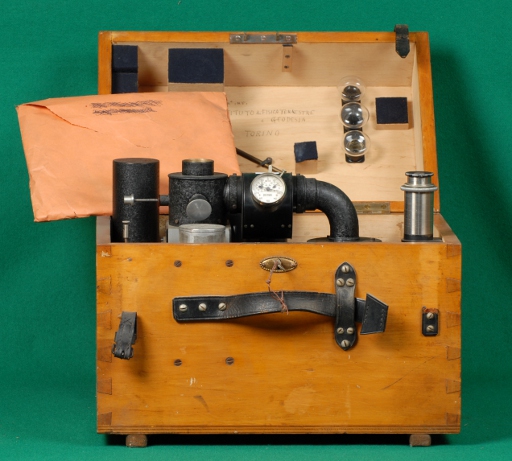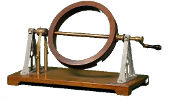» Ebert aspirator-type ion counter (0800)
Immagini



DESCRIPTION
Exhibit 800 is an ion counter designed by Hermann Ebert of the type "condenser with aspiration". It is used to measure the concentration and mobility of small ions in air. The instrument (design-1) consists essentially of a condenser formed by a metallic cylinder A connected to ground on the axis of which is mounted a rod B connected to a quartz fiber electroscope E. Air is sucked into the tube by the fan F for a period controlled by a clock mechanism, while the volume of this air is measured by the anemometer C. The velocity of the air intake must be sufficiently low to allow small ions to reach the central rod before reaching the bottom of the tube A. At the same time the velocity must be sufficiently high so that the large ions do not reach the central rod in the same time.
If n- \` is the number of negative ions per unit volume attracted to the positively charged rod, the total negative charge accumulated by the electroscope is equal to:
![Formula: [vq_en\_] Formula: [vq_en\_]](/foto/equaz/800_fr01.png) , where v \` is the volume and "qe" ìs the charge of a single ion.
, where v \` is the volume and "qe" ìs the charge of a single ion.
Let:
C be the capacity of the cylindrical condenser (formed by the combination cylinder and rod)
V1 The potential of the electroscoope before the intake of the air
V2 the potential of the electroscope after the intake of the air.
Then:
![Equazione: [C(V_1 - V_2) = vq_en_{-}] Equazione: [C(V_1 - V_2) = vq_en_{-}]](/foto/equaz/800_eq01.png)
From which one finds the number n_ of negative ions
![Equazione: [n_{-} = \frac{C(V_1 - V_2)}{vq_e}] Equazione: [n_{-} = \frac{C(V_1 - V_2)}{vq_e}]](/foto/equaz/800_eq02.png)
To determine the number n+ of positive ions it is necessary to repeat the experiment charging negatively the central rod.
The instrument is conserved in its own wood case.
BIBLIOGRAPHY
- [1] URL [ http://er.jsc.nasa.gov/seh/e.html ]
- [2] B.F.J. Schonland - Atmospheric electricity - Methuen & Co. Ltd, London, 2nd edition 1953, page 3
- [3] Documenti accompagnatori: ([3.26MB] pdf )
Dati Catalografici
| Data di costruzione: | Anni '30 del XX Secolo |
|---|---|
| Data di carico: | Ignota |
| Nr. Inventario: | Ignoto (Ignoto) |
| Costruttore: | Günther & Tegetmeyer |
| Materiale: | metallo, vetro |
| Dimensioni: | Custodia: 37 cm x 26 cm x 30 cm |
| Conservazione: | buono |
